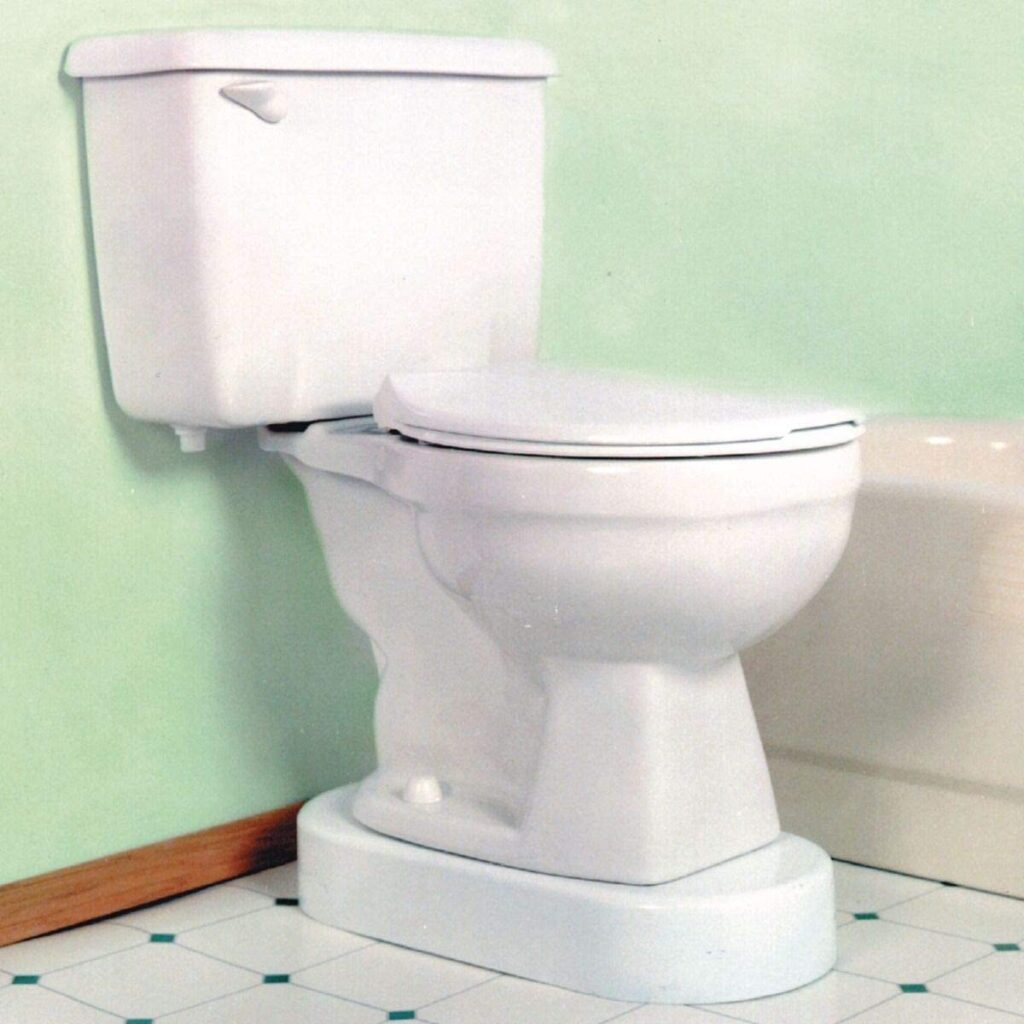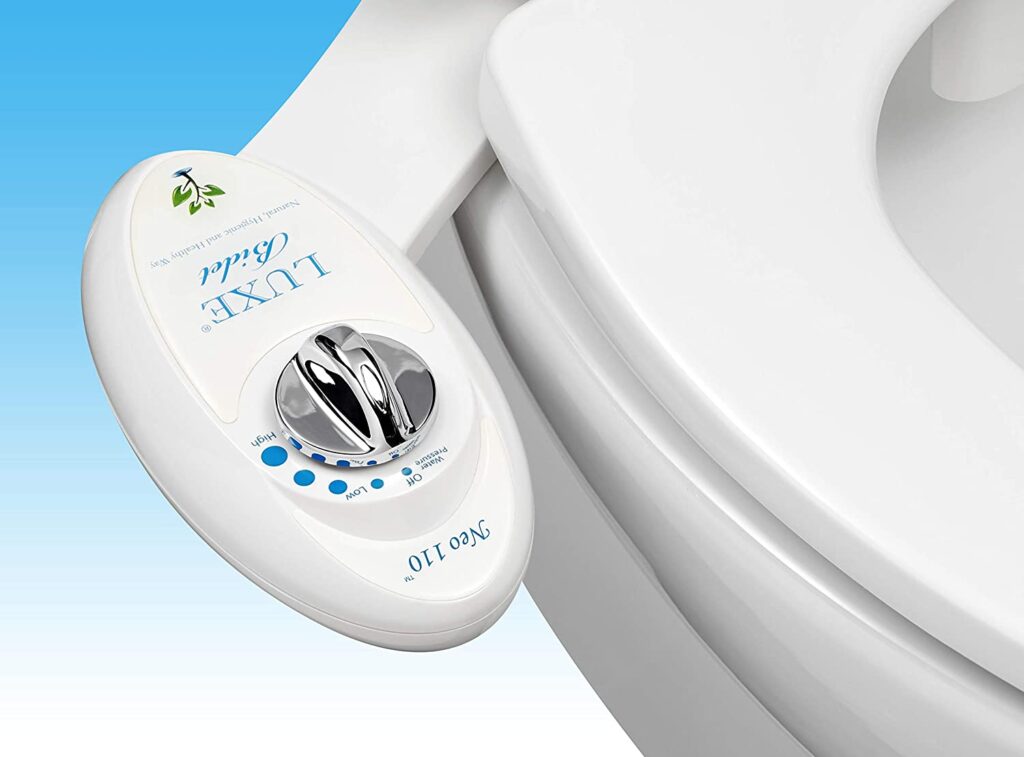 It can be quite frustrating when your bathroom fan stops functioning properly. A fan that’s not working well means that the moisture and humidity in the room won’t be ventilated effectively, which can lead to a buildup of mold, mildew, and even unpleasant odors. It may seem like a complicated issue, but often the cause is something simple and can be fixed with a little troubleshooting.
It can be quite frustrating when your bathroom fan stops functioning properly. A fan that’s not working well means that the moisture and humidity in the room won’t be ventilated effectively, which can lead to a buildup of mold, mildew, and even unpleasant odors. It may seem like a complicated issue, but often the cause is something simple and can be fixed with a little troubleshooting.
Having a properly working bathroom fan is essential for maintaining a healthy environment in your bathroom. It helps in controlling humidity, improving air circulation, and preventing long-term damage to your bathroom. Thankfully, most of the issues that affect bathroom fans are easy to address on your own.
Table of Contents
Possible Causes of the Problem
1. Dirty Fan Blades
Why Fan Blades Get Dirty:
Over time, dust, dirt, and debris naturally accumulate on the fan blades. If the fan hasn’t been cleaned regularly, this buildup can significantly reduce its performance. The dirt can act as a barrier, preventing the fan from moving air efficiently, which impacts the overall effectiveness of the fan.
How Dirty Blades Impact Performance:
-
Slower Operation: A buildup of debris on the blades forces the motor to work harder to rotate them, slowing down the fan.
-
Unusual Noises: Dust and dirt on the blades may also cause vibrations or create friction, resulting in strange, loud noises when the fan is running.
Solution:
Cleaning your bathroom fan blades is simple and can be done with a few basic tools. Here’s how you can clean them:
-
Turn off the Power: Before doing anything, make sure the power to the fan is turned off to avoid any accidents.
-
Remove the Fan Cover: Use a screwdriver to carefully remove the cover from the fan.
-
Clean the Blades: Use a soft cloth or a vacuum with a brush attachment to remove dust and debris. You can also use a small brush to get into hard-to-reach areas.
-
Check the Fan Housing: While the cover is off, it’s a good time to clean the rest of the fan housing.
-
Reassemble: Once everything is clean, reattach the cover and turn the power back on.
Frequency of Cleaning and the Right Tools:
-
It’s ideal to clean your bathroom fan blades at least once a year, or more often if you notice poor performance.
-
Use a soft cloth, a vacuum cleaner with a brush attachment, and a small brush for detailed cleaning.
2. Blocked or Clogged Vent
What Happens When the Vent is Blocked:
If the vent leading outside is blocked or clogged, the fan can’t effectively expel air from the bathroom. This blockage restricts the airflow, making the fan much less efficient. This means your bathroom will stay humid longer, increasing the risk of mold and mildew buildup.
Common Causes of Blockages:
-
Bird Nests: Birds often build nests in vents, especially if you have an exhaust vent opening to the outside.
-
Debris: Leaves, dirt, and even cobwebs can clog the vent.
-
Excessive Lint: Over time, lint from clothing or towels can accumulate in the vent, leading to a blockage.
Solution:
To fix this issue, you’ll need to clean the vent:
-
Inspect the Vent: Go outside and check the vent cover for any visible blockages like nests, debris, or lint.
-
Clean the Vent: If the vent is accessible, remove the cover and clear out any blockages. You can use a vent cleaning brush or a vacuum cleaner to remove debris.
-
Use a Vent Cleaning Kit: If the vent is clogged further inside the duct, consider using a vent cleaning kit, which typically includes a long, flexible brush that can reach deep into the duct.
-
Consider Professional Help: If the vent is located in a difficult-to-reach area or if you can’t remove the blockage yourself, it may be time to hire a professional to clean and inspect the vent.
3. Faulty Motor
Signs of a Faulty Motor:
If your bathroom fan is making strange sounds, running slowly, or has stopped working completely, it could be a sign of a faulty motor. A motor that’s starting to fail may produce unusual noises, like a grinding or humming sound, and could eventually stop working altogether.
Why Motors Fail:
The motor in your bathroom fan works continuously to keep the fan blades moving, which can cause wear and tear over time. Motors can also fail due to electrical issues, such as a loose connection, overheating, or a faulty capacitor.
Solution:
To troubleshoot a motor issue:
-
Listen for Unusual Noises: If the fan is making loud noises, the motor may need lubrication or repair. You can try adding a small amount of oil to the motor’s bearings.
-
Test the Motor: Check if the motor is running too slowly or not at all. If it’s not turning, there might be an electrical issue.
-
Replace the Motor: If the motor is faulty beyond repair, it’s time to replace it. You can either replace the motor yourself (if you have the proper tools and knowledge) or hire a professional electrician or handyman to do it for you.
Signs the Motor Needs a Complete Replacement:
-
The motor is no longer running at full speed or has completely stopped.
-
You’ve checked all other possible causes (like electrical issues or dirty blades), and the fan is still malfunctioning.
-
The motor is making excessive noise, even after lubrication.
4. Electrical Problems
Why Electrical Issues Affect the Fan:
Electrical problems, such as faulty wiring, a blown fuse, or a tripped circuit breaker, can prevent your bathroom fan from working properly. These issues disrupt the electrical flow that powers the fan and its components. If any of these problems occur, your fan may not run at all or may run intermittently, leading to poor ventilation.
How to Identify Electrical Problems:
-
Flickering Lights: If the lights in the bathroom flicker or dim when you turn on the fan, it could be a sign of an electrical issue.
-
No Power to the Fan: If your fan isn’t turning on despite being in good condition, there may be an issue with the power supply, such as a tripped breaker or blown fuse.
Solution:
-
Check the Wiring: Start by ensuring that all wiring connections are intact and properly connected. If you notice any exposed or frayed wires, they may need to be replaced or rewired.
-
Inspect the Circuit Breaker: Go to your electrical panel and check if the breaker for the bathroom fan has tripped. If the breaker is in the “off” position, reset it by flipping it to “on.” If the breaker trips again immediately, there may be an underlying electrical problem that needs attention.
-
Replace a Blown Fuse: If your fan is wired with a fuse rather than a circuit breaker, check the fuse to see if it’s blown. Replace the fuse with one that matches the correct amperage rating for your fan.
5. Improper Fan Sizing
What Happens with an Over or Under-Sized Fan:
If the fan is too small for the bathroom, it won’t be able to remove enough humidity or circulate air effectively. On the other hand, if the fan is too large for the space, it can create excessive noise and may use more power than necessary. Both scenarios can lead to inefficient operation and unsatisfactory performance.
How to Identify If Your Fan is the Right Size:
To find the right size fan for your bathroom, you need to match the fan’s CFM (Cubic Feet per Minute) rating to the room’s size. The larger the bathroom, the higher the CFM rating the fan should have. Here’s how you can calculate the required CFM:
-
Measure the Bathroom’s Square Footage: Multiply the length and width of your bathroom to get the total square footage.
-
Calculate the Required CFM: A general guideline is that for every 1 square foot of bathroom space, the fan should provide about 1 CFM of airflow. For example, if your bathroom is 100 square feet, you would need a fan rated at 100 CFM.
Solution:
-
Choose the Correct Fan Size: Once you’ve calculated the required CFM, select a fan that matches or slightly exceeds that rating.
-
Install the Fan Correctly: Make sure the fan is installed in a way that maximizes airflow—typically, it should be placed near the shower or bath area to remove moisture quickly.
Tips on Calculating the CFM Needed for Optimal Airflow:
-
If your bathroom has high ceilings, you may need a fan with a higher CFM rating to ensure proper air circulation.
-
Larger bathrooms or bathrooms with multiple occupants may also require a fan with more power to handle the increased moisture.
6. Aging or Worn-Out Fan
Why Fans Wear Out Over Time:
Over time, the motor and components in your bathroom fan can wear out due to continuous operation, exposure to humidity, and dust accumulation. The fan’s efficiency may decline as the parts begin to deteriorate, especially in older models.
Signs Your Fan is Too Old:
-
Lack of Power: The fan may run slowly or may not run at all, indicating the motor or electrical components have failed.
-
Excessive Noise: If the fan starts making grinding, humming, or squealing noises, it may be a sign that the motor is wearing out.
-
Malfunctioning: The fan may turn on and off intermittently or fail to operate as needed, even after troubleshooting.
Solution:
-
When to Consider Replacing an Aging Fan: If your fan has been in use for 10+ years and shows signs of malfunction or inefficiency, it’s time to consider replacing it. Older fans may no longer meet the latest standards for noise levels, energy efficiency, or ventilation effectiveness.
-
How to Choose a Long-Lasting Replacement Fan: Look for a fan that’s rated for long-term durability, offers energy-efficient operation, and matches your bathroom’s size requirements. Consider models with quieter operation and newer technology, such as smart fans that automatically adjust to the humidity level.
7. Improper Installation
How Installation Affects Performance:
If a bathroom fan isn’t installed properly, it can affect the fan’s ability to work efficiently or cause it to stop functioning altogether. Common installation issues include poor venting, incorrect wiring, or improper placement of the fan.
Common Installation Issues:
-
Incorrect Wiring: If the fan is not wired properly, it may not receive power, or it may malfunction intermittently.
-
Improper Venting: If the vent is not connected to the outside or the vent duct is too long, the fan won’t be able to expel moisture effectively.
-
Poor Placement: The fan may be installed in the wrong location, causing inefficient airflow and improper ventilation.
Solution:
-
How to Inspect the Fan’s Installation: Check if the fan is wired correctly, if the vent is properly connected to the outside, and if the fan is positioned correctly to expel air efficiently. Ensure the fan is level and securely fastened.
-
When to Call a Professional Installer: If you suspect installation issues or are unable to perform an inspection yourself, it’s a good idea to call a professional to correct the installation. A licensed electrician or HVAC specialist can ensure that the fan is installed according to code and functions properly.
Troubleshooting Steps
Step-by-Step Guide:
-
Turn off the Power to the Fan Before Troubleshooting
-
Before working on the fan, always ensure the power is turned off at the circuit breaker. This will help avoid electric shock or any accidents during the process.
-
-
Inspect the Fan Blades for Dirt and Debris, and Clean If Necessary
-
Remove the fan cover and examine the fan blades for any dirt, dust, or buildup. Clean the blades using a soft cloth, a vacuum with a brush attachment, or a small brush to remove dust. Clean blades help the fan run more efficiently.
-
-
Check the Vent for Any Blockages and Clear It
-
Go outside and check the vent opening for any obstructions like leaves, nests, or debris. Clear any blockages to ensure proper airflow. If the vent is difficult to reach, consider using a vent cleaning kit or hire a professional.
-
-
Listen for Unusual Noises to Identify Motor Issues
-
Turn the fan on and listen for any abnormal sounds like grinding, rattling, or humming. These noises could indicate that the motor is wearing out or has other internal issues.
-
-
Test the Electrical Connections and Reset the Breaker if Needed
-
If the fan isn’t working at all, check the electrical connections to ensure everything is securely wired. If necessary, reset the circuit breaker or replace a blown fuse to restore power to the fan.
-
Safety Precautions:
-
Use Insulated Tools: Always use insulated tools when working around electrical components to protect yourself from electric shock.
-
Be Cautious When Using Ladders or Stools: Ensure the ladder or stool is stable when accessing the fan. If the fan is high up, make sure you have proper balance and stability.
When to Call a Professional
Signs You Need Professional Help:
-
Electrical Problems That Could Be Dangerous: If you’re unable to identify the issue or if there are signs of an electrical malfunction (such as sparks, burning smells, or tripped breakers), call a professional. Working with electricity can be dangerous.
-
Motor Replacement or Extensive Repairs: If the motor is damaged or if the fan needs an extensive repair, it’s best to hire an expert. Motor replacement often requires specialized knowledge and tools.
Why It’s Important to Call an Expert:
-
Prevent Further Damage: Professional repairs ensure that the problem is fixed correctly and prevent any future issues from arising. Incorrect repairs could cause further damage to your fan or electrical system.
-
Ensure Safety: A professional can identify safety hazards and address them properly, reducing the risk of accidents or injury.
-
Get a Warranty on Repairs: When a licensed professional performs the work, you can often receive a warranty on the repairs, giving you peace of mind that the job was done right.
How to Find a Reliable Contractor:
-
Check Reviews and References: Look for contractors with positive reviews or ask friends and family for recommendations. A good reputation is a strong indicator of quality work.
-
Ensure Proper Licensing and Certification: Verify that the contractor has the proper licensing and certifications required in your area. Licensed electricians or HVAC professionals are trained to handle these repairs safely.
-
Get Multiple Quotes: To ensure you’re getting a fair price, it’s a good idea to request quotes from multiple professionals and compare their services, pricing, and warranty offerings.
When to Replace Your Bathroom Fan
Signs It’s Time for a Replacement:
-
Persistent Noise or Malfunction Even After Repairs: If your fan continues to make noise, operate slowly, or fail after troubleshooting and cleaning, it might be time for a replacement.
-
Frequent Breakdowns: If your fan is breaking down often or not performing as expected, it could indicate a deeper issue, such as a worn-out motor or outdated components.
-
Inability to Meet Humidity Control Needs: If the fan no longer effectively removes moisture from the bathroom, resulting in a build-up of mold or mildew, a new fan with better performance might be required.
How to Choose a New Fan:
-
Look for Models with Higher Energy Efficiency: Newer models are designed to use less energy while offering better performance. Choose a fan that is energy-efficient to reduce your utility bills.
-
Quieter Operation: If noise is a concern, look for fans designed for quieter operation. Some models feature noise-reducing technology that ensures a quieter experience.
-
Appropriate Airflow: Choose a fan with the right CFM (Cubic Feet per Minute) rating for your bathroom’s size. A fan that’s too small will not be effective, while one that’s too large could be noisy and waste energy.
Maintenance Tips to Avoid Future Problems
Regular Cleaning:
-
Clean the Fan Blades and Vent Annually: To ensure your bathroom fan operates efficiently, clean the fan blades and vent at least once a year. Over time, dust and debris can accumulate on the blades and in the vent, causing the fan to work harder and potentially leading to motor strain.
-
How to Clean: Turn off the power, remove the fan cover, and wipe down the blades with a soft cloth or vacuum the debris. Similarly, inspect and clean the vent outside to ensure there are no blockages.
Periodic Inspections:
-
Check for Dust Buildup and Possible Blockages: Besides cleaning, inspect the fan and vent every few months to check for any dust accumulation or potential blockages. A quick check can prevent minor issues from turning into bigger problems.
-
Look for Wear: Check the fan’s wiring and motor for any signs of wear, rust, or damage. Early identification of issues can save you time and money in the long run.
Upgrading Components:
-
Replace Outdated or Inefficient Fans: If your bathroom fan is old or frequently malfunctions, consider upgrading to a newer, more efficient model. New fans are often quieter, more energy-efficient, and better at circulating air.
-
Improvement in Performance: Upgrading to a fan with a higher CFM rating can improve airflow, while models designed for quieter operation will reduce noise.
Conclusion
In this guide, we’ve covered common reasons your bathroom fan may not be working properly, including dirty fan blades, clogged vents, faulty motors, and electrical issues. We’ve also provided troubleshooting steps and solutions for each problem.
Regular maintenance is key to extending the life of your bathroom fan and ensuring it continues to perform well. Clean the fan blades and vent at least once a year, inspect the system periodically for buildup or blockages, and upgrade components as needed to maintain efficiency.
While many issues can be resolved with simple troubleshooting, don’t hesitate to call a professional if the problem persists or if you’re dealing with more complex issues. A professional can ensure your fan is working safely and efficiently, preventing potential future problems.
Frequently Asked Questions (FAQs)
1. Why is my bathroom fan making a loud noise?
-
It could be caused by dirty fan blades, a worn-out motor, or a blocked vent. Clean the fan and check the motor for any signs of failure. If the noise persists, it might be time for a motor replacement.
2. How do I know if my bathroom fan is the right size?
-
Calculate the required CFM (Cubic Feet per Minute) based on the size of your bathroom. A properly sized fan ensures optimal airflow and ventilation, helping maintain a dry and odor-free environment.
3. My bathroom fan stopped working entirely. What should I do?
-
Start by checking the circuit breaker and the GFCI outlet to ensure they haven’t tripped. If those are working, check the motor and electrical connections. If the fan is still not working, it may require professional repair or replacement.
4. Can I install a new bathroom fan myself?
-
While it’s possible for DIYers with basic electrical knowledge, professional installation ensures safety and correct setup. An experienced installer can ensure proper wiring and venting, reducing the risk of future issues.
5. How often should I replace my bathroom fan?
-
Bathroom fans typically need to be replaced every 10-15 years. If the fan is no longer functioning effectively or you’re experiencing frequent malfunctions, it’s time for a replacement.






